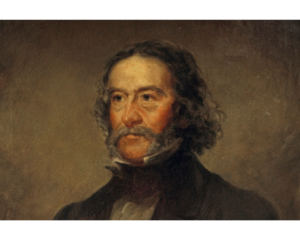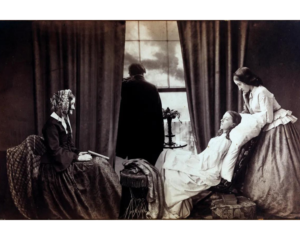History

“It’s quite a stretch from a home for destitute, chronically ill women located in the vestry of a church to the research ongoing in this building. I sometimes wonder what Harriet Ryan Albee would think of it, but then I remember the words she herself spoke on the occasion, ‘The home has never done good by rule, but according to a present need.’ Certainly, there is a present need for the work going on here and now.”
– Amalie M. Kass

A prominent obstetrician, professor of midwifery and medical jurisprudence, and dean of the faculty at Harvard Medical College, Dr. Walter Channing (1786-1876) was a central figure in Boston's medical community for more than fifty years. He was also an important presence in the lives of countless women who relied on him to provide safe pregnancy and childbirth, care for postpartum disorders, and treat gynecological problems. He was the first professor of obstetrics and medical jurisprudence at Harvard University (then called Harvard College), a position he held from 1815 to 1854. In 1832, he co-founded the Boston Lying-in Hospital for destitute women, now Brigham and Women's Hospital.

The Channing Street Home for Sick and Destitute Women was founded in 1857 by Harriet Ryan Albee (1829-1873) as a refuge for poor women. A majority of the Home’s residents were sick with tuberculosis. Over the next century, the Home became nationally known as a center for the treatment of tubercular patients. After World War II, the widespread use of antibiotics for tuberculosis left the facility with empty beds, but ongoing endowment funds.

After the closing of the Channing Home, the Trustees of the Channing Home used its endowment funds to establish the Channing Laboratory in the Harvard Medical Unit at Boston City Hospital (BCH) to research infectious and pulmonary diseases. Dr. Edward H. Kass (1917-1990), who had been a visiting physician at the Home, became the Channing Laboratory's first director. Dr. Kass, an eminent infectious disease researcher with a diverse range of interests that included pulmonary infection, urinary tract infection, antibiotic pharmacology, and the role of hormones in resistance to infection, expanded the Laboratory's activities to include epidemiology and chronic disease.

With the closing of the Harvard Medical Unit at BCH in the mid-1970s, the Channing Laboratory moved to 180 Longwood Avenue in the Longwood Medical Area. Dr. Kass retired in 1989 and Drs. Dennis Kasper and Frank Speizer became co-directors of the Infectious Diseases and Epidemiology units, respectively.

The success of the Channing Laboratory led to a further need for expansion, and in 1996, it moved to a state-of-the-art location at 181 Longwood Avenue as a multidisciplinary research division in the Department of Medicine at Brigham and Women's Hospital and Harvard Medical School.

Under the leadership of Dr. Edwin Silverman, a new Systems Pathobiology Unit was formed to join the Chronic Disease Epidemiology Unit and the Systems Genetics and Genomics Unit.
Achievements
The Channing Division of Network Medicine has a long and rich history of achievements and is renowned as the site for the Nurses’ Health Study and other ongoing epidemiologic investigations that have influenced health policy and practice nationally and internationally.
Demonstrating that consumption of trans-unsaturated fatty acids in foods increases risk of coronary heart disease and overall mortality.
Showing that sex hormone levels in plasma predict risk of breast cancer development.
Demonstrating that aspirin use lowers risk of colorectal cancer and adenoma, and the effect is mediated by the cyclooxygenase-2 pathway.
Finding that fine-particulate air pollution levels are associated with increased mortality.
Identifying more than 80 genomic regions that have been associated with COPD. Also, CDNM molecular studies have identified important new biological pathways in COPD.
Highlighting the importance of vitamin D in the development of asthma, which resulted from CDNM studies that began with genetics and culminated in clinical trials.
Identifying in utero smoke exposure as a cause of childhood asthma.
Identifying how dietary factors and patterns influence health.
